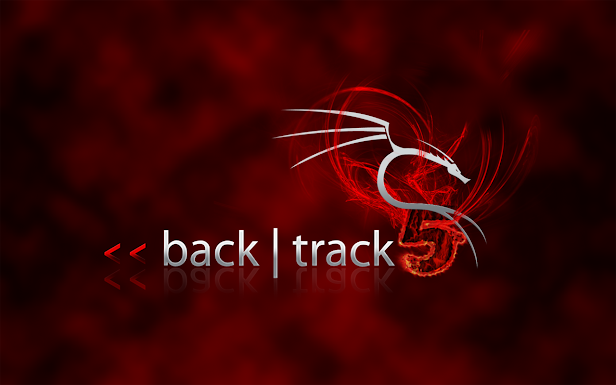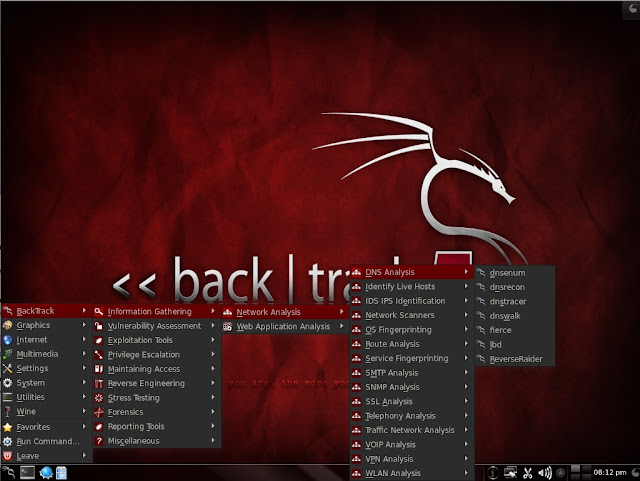Backtrack 5 is dedicated operating system for penetration testing. This is perfect for forensic. Download ISO from here.
Before Installing Software You Must Watch This Installation Guide Video
Backtrack, the GNU/Linux distribution focused on digital forensics and penetration testing, has a new version out, with the public release (on May 10) of
BackTrack 5, code-named Revolution, by the BackTrack development team. BackTrack focuses primarily on providing a native environment purely dedicated to hacking. This latest distro was eight months in the making, and boasts of significant improvements over its predecessor.
BackTrack 5 features a comprehensive arsenal of over 350 security-related tools to test everything from Web applications to RFID systems. The new version of BackTrack lives up to its “Revolution” moniker in that it has been completely overhauled and rewritten from the ground up, providing users with an optimized platform for penetration testing and digital forensics exercises. For the first time in its development road map, BackTrack now includes support for ARM-based systems — a significantly upgrade.
BackTrack 5 features
A major addition in the new version of BackTrack is the 64-bit offering. BackTrack 5 is based on Ubuntu Lucid Lynx v10.04, the latest long term support (LTS) release using Linux kernel v2.6.38. BackTrack 5 is the first version to be released with the complete source code in its repositories. This addition is expected to clear up licensing issues that existed in the previous Backtrack distros. BackTrack 4 is no longer available for download at the developer’s Website, and support for it has officially been discontinued.
Here is a more detailed look at important features of BackTrack 5.
Support for KDE and Gnome
BackTrack 5 boasts of support for KDE Plasma (4.6), Gnome (2.6) and Fluxbox. This makes it much simpler to migrate from Gnome-based distributions. Unifying the desktop environment has the added advantage of an easier learning curve for new users. Streamlined images for each desktop environment (DE) are available on the backtrack website. Tool integration with supported environments is seamless with DE-specific menu structures. However, while Gnome has a smaller memory footprint and is less resource hungry, the Gnome versions lack default package managers, which need to be added separately.










![SUPER MARIO ODYSSEY SWITCH NSP [UPDATE] (RF)](https://blogger.googleusercontent.com/img/b/R29vZ2xl/AVvXsEidArpIV-jO3PxWcEGUlv7U170pFbzqUsaLPcZaNNYD3t0zY16G9M4Antd9zt75uE7Qt2gWAOQsiKKcxdA2dqkeVkPOL50Zt4jh-ajp134W0eTkYQl-DGfIzAGLitSULOsTkgUSjzc5Rv0/s72-w640-c-h610/SUPER+MARIO+ODYSSEY+SWITCH+NSP+%255BUPDATE%255D+%2528RF%2529.jpg)





Aucun commentaire